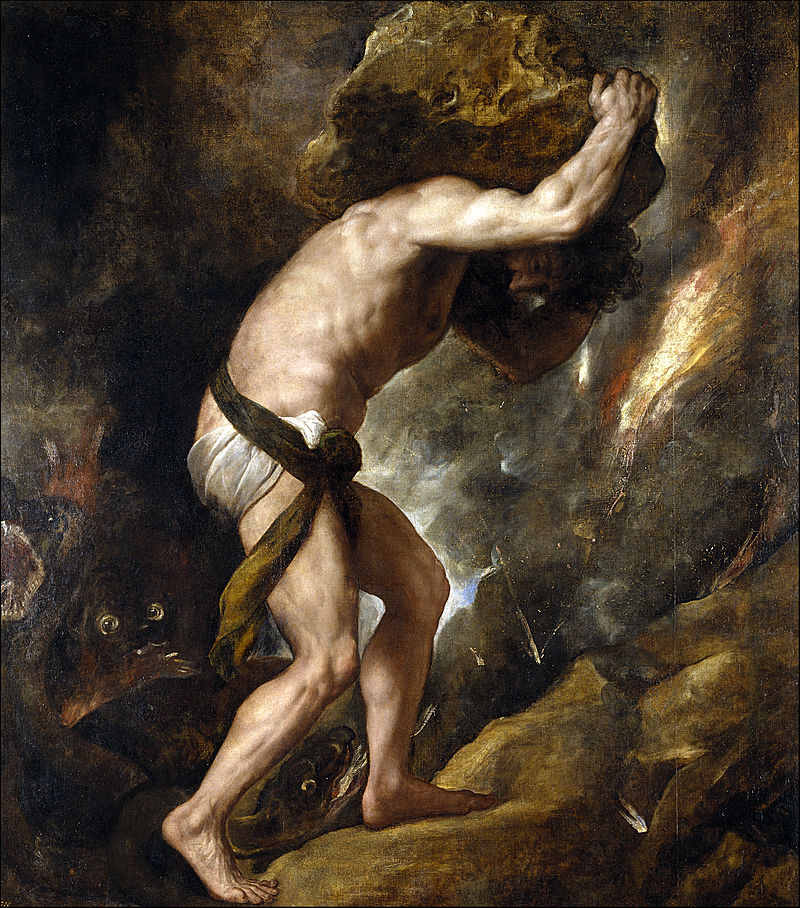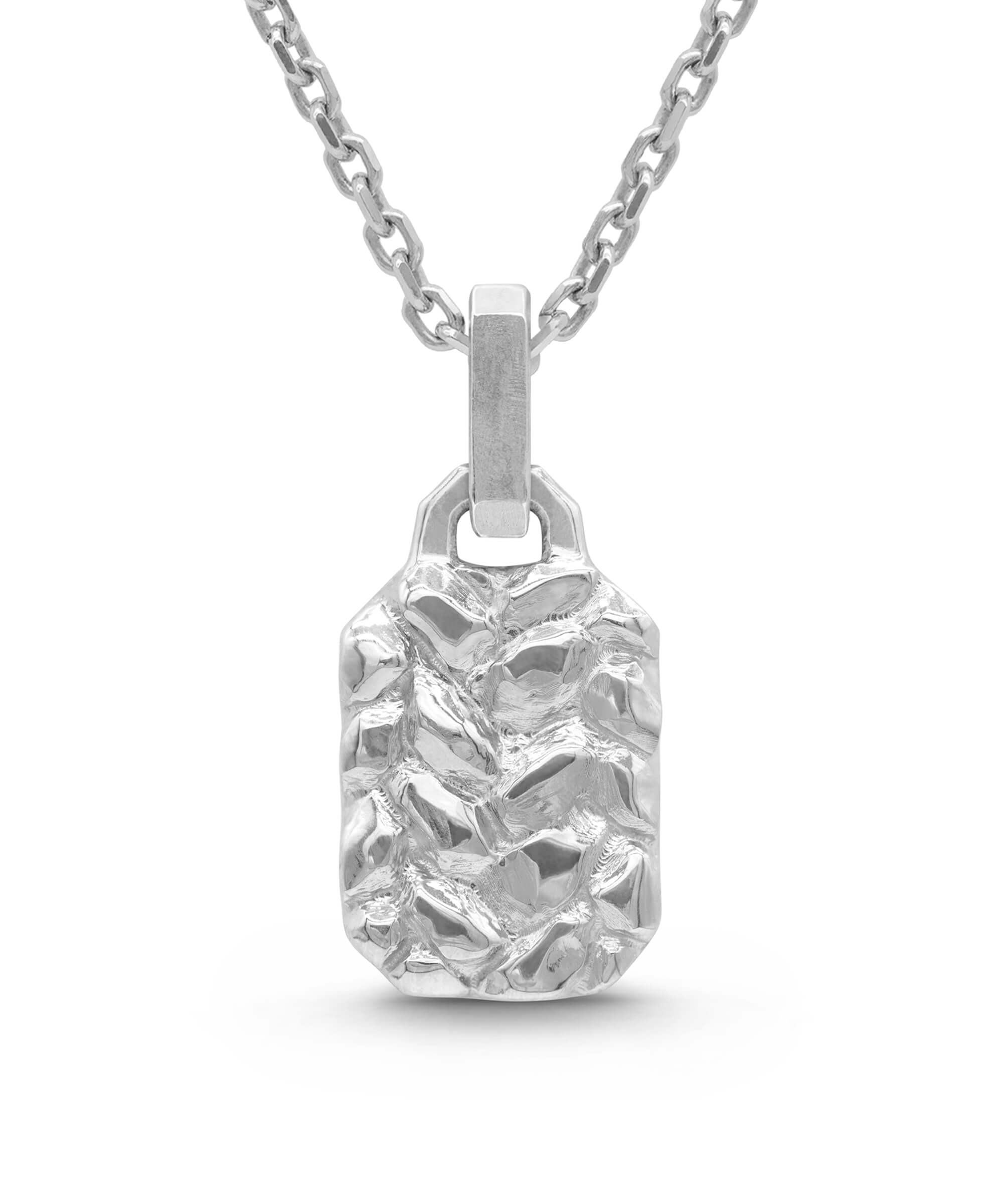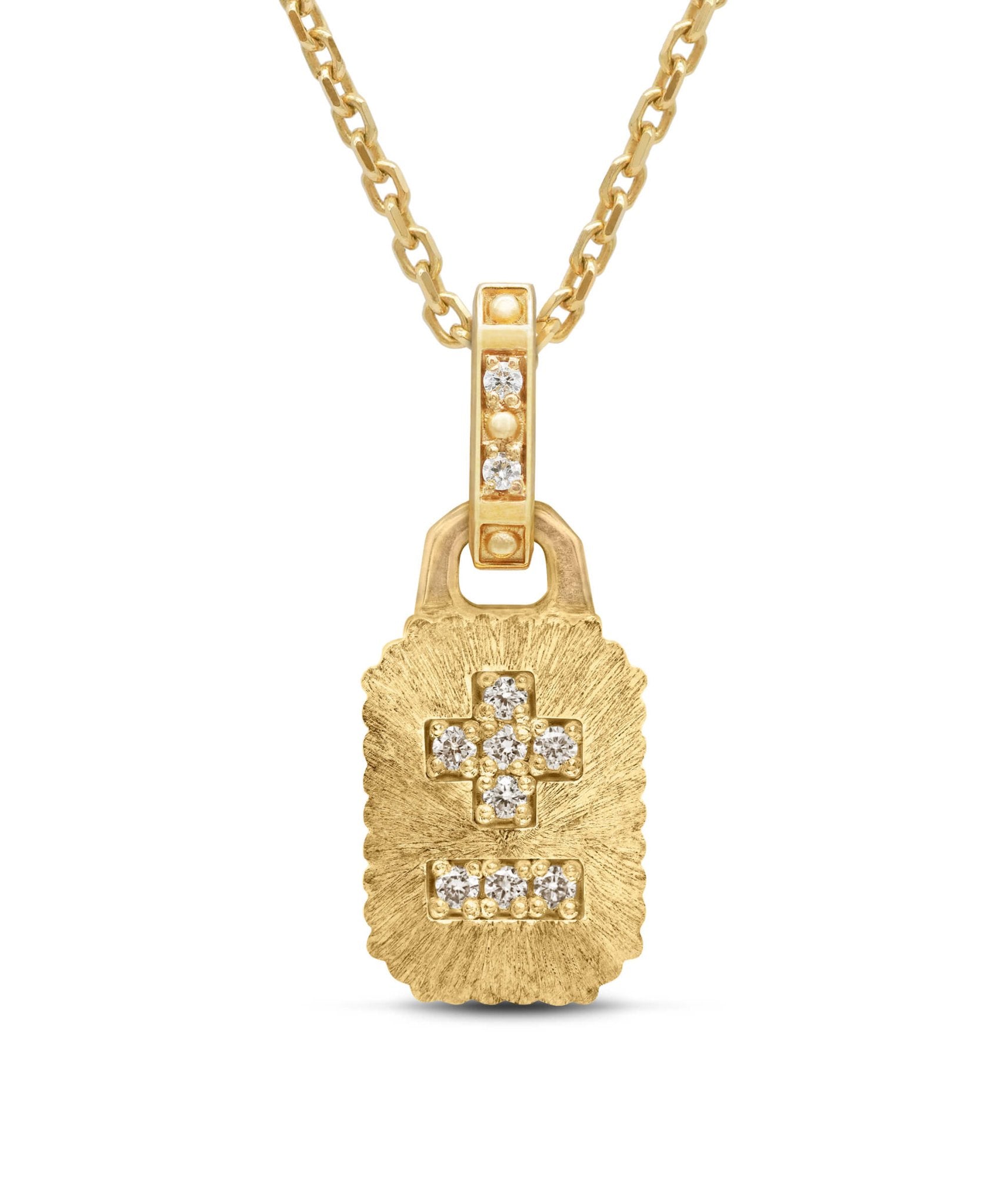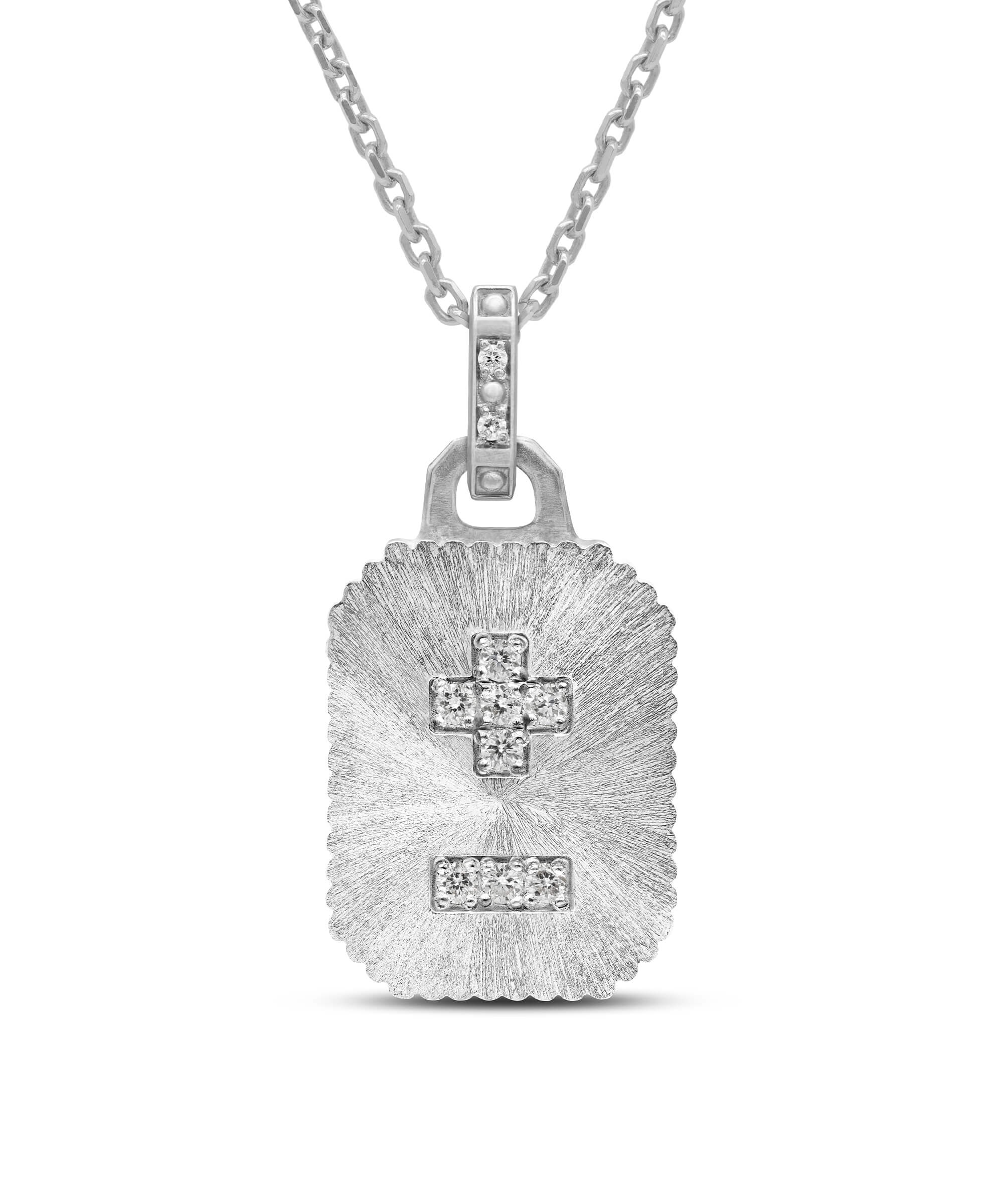The Rock Symbol stands as a timeless representation of strength, endurance, and stability, deeply rooted in the human experience across cultures and epochs. From ancient civilizations where rocks were seen as protective shelters and symbols of permanence, to their modern interpretations in literature, art, and jewelry, rocks embody resilience and the unyielding forces of nature. Whether evoking the solid foundation of faith or the weight of life’s challenges, the rock remains a potent metaphor for inner strength and the grounding energy that supports human growth and perseverance. This exploration delves into the origins and varied cultural meanings of the rock symbol, its role in jewelry and literature, and its lasting impact on our understanding of the human journey.
Amuletha™ Book of Symbols
Rock Symbol
*Caspar David Friedrich, The Wanderer Above the Sea of Fog, 1817-1818
This painting is a masterpiece of Romanticism, capturing the sublime and the mysterious in nature. The painting depicts a lone figure standing on a rocky peak, gazing out over a swirling sea of fog, with distant mountains barely visible. Friedrich often used landscapes to express emotional and spiritual depth, reflecting his personal experiences of loss and introspection. This painting, like many of his works, embodies his belief that nature is a reflection of the soul, drawing viewers into a contemplation of existence and the divine.

*Caspar David Friedrich, The Wanderer Above the Sea of Fog, 1817-1818
This painting is a masterpiece of Romanticism, capturing the sublime and the mysterious in nature. The painting depicts a lone figure standing on a rocky peak, gazing out over a swirling sea of fog, with distant mountains barely visible. Friedrich often used landscapes to express emotional and spiritual depth, reflecting his personal experiences of loss and introspection. This painting, like many of his works, embodies his belief that nature is a reflection of the soul, drawing viewers into a contemplation of existence and the divine.
ROCK SYMBOL ORIGIN
The rock symbol has been used as a powerful representation of strength and endurance across multiple cultures. Its origins trace back to early human civilizations, where rocks were seen as the foundation of life and survival. The earliest depictions of rock symbolism can be found in prehistoric cave paintings, where large boulders or formations were often associated with protection and shelter. In ancient Egypt, rocks were thought to embody the eternal, with pyramids built from stone representing a lasting connection between life and the afterlife.
Throughout history, the rock has come to symbolize stability. For instance, in ancient Greece, the myth of Sisyphus centers around a rock that represents an unyielding force and the consequences of struggle. By the 5th century BCE, Greek philosophers began referring to rocks in metaphors of logic and reason, associating them with a foundation of truth and certainty. This link between rock and truth is carried into various religious texts, where the image of the rock is used to signify the eternal presence and protection of the divine.
Over time, the rock symbol's meaning has remained constant in its association with strength and permanence. However, its graphic representation evolved through different cultures. Early Christian traditions depicted the rock as a spiritual anchor, often representing faith and resilience in times of hardship. In modern symbolism, the rock continues to stand for unwavering strength, particularly in the face of adversity.
What does ROCK symbolize
The rock symbol holds deep significance across various cultures and eras. Here are four of the most recognized interpretations of the meanings it illustrates:
Resilience
Rocks symbolize the ability to endure and resist the passage of time and the elements, reflecting a strength that is both physical and spiritual.
Permanence
Representing a solid foundation, rocks are associated with stability and the grounding energy that supports personal growth and development.
Inner Strength
The unchanging nature of rocks serves as a powerful metaphor for inner strength and the power of self-belief, encouraging steadfastness in the face of life's challenges.
Cultural mention
Throughout human history, rocks have carried profound symbolic meanings in various cultures and stories. From ancient legends to modern-day references, the rock symbolizes strength, endurance, and permanence. It appears in the foundations of myths, religious texts, and even pop culture, representing an unshakable force or eternal wisdom. In this section, we’ll dive into some of the most fascinating and widely recognized tales, shedding light on how the humble rock has become an enduring symbol across the ages.
The Myth of Sisyphus
In Greek mythology, Sisyphus, the cunning king of Corinth, defied the gods and was punished for his deceit. His eternal punishment involved pushing a massive boulder up a steep hill, only for it to roll back down just as he neared the summit. This endless, futile labor symbolizes the repetitive struggles humans face, the burdens they carry, and the seemingly insurmountable tasks life often presents. The rock, as the center of this myth, embodies the weight of life's hardships and the endurance required to face them. Philosophers such as Albert Camus drew on this story to reflect on existentialism, famously arguing that despite life’s inherent absurdity, we must imagine Sisyphus as happy, embracing the struggle itself as a means of finding meaning.
*Oil painting of Sisyphus by Venetian master Titian.

*Oil painting of Sisyphus by Venetian master Titian.
David and Goliath
The biblical tale of David and Goliath has transcended its religious roots to become a universal symbol of overcoming overwhelming odds. In the story, the young shepherd David faces the giant Goliath, a fierce warrior. Armed with nothing but a sling and a small stone, David defeats Goliath, demonstrating that true strength comes from courage and inner conviction, not size or might. The rock used by David symbolizes precision, belief, and the power of the underdog. In a broader sense, this story teaches that perseverance and belief in oneself can triumph over even the greatest of challenges. It resonates deeply in popular culture as a metaphor for success against unlikely odds, particularly in sports, business, and personal growth.
*David with the Head of Goliath by Caravaggio

*David with the Head of Goliath by Caravaggio
Rock Balancing
Rock balancing is an ancient practice where stones are delicately stacked to create intricate, seemingly impossible formations. This art form, found in cultures across the globe, from Japanese Zen gardens to Indigenous traditions in the Americas, symbolizes the human quest for balance and stability in life. The process of carefully balancing rocks requires patience, precision, and an understanding of natural forces, often serving as a meditative or spiritual practice. In Zen Buddhism, balanced stones are seen as a reflection of the delicate balance between strength and fragility in life. In many Indigenous cultures, rock balancing has been used as a way to communicate with the natural world, embodying harmony and connection with nature. The act itself is temporary, as gravity or wind will eventually bring the stones down, reminding us of the transient nature of life and the importance of embracing the present moment.
*Rocks

*Rocks
ROCK symbol in the world of jewelry
The rock symbol, though not as commonly worn as other symbols, carries deep meaning for those who choose to adorn themselves with it. People who wear rock symbols in jewelry tend to value qualities like stability, strength, and resilience. This symbol appeals to individuals across various age groups, from younger people drawn to its grounded, earthy connotation, to older individuals who appreciate its association with endurance and permanence. The rock can serve as a personal reminder of one’s inner strength or act as a shield, symbolizing protection against life's difficulties. The most common use of the rock symbol in jewelry is often in spiritual or naturalistic contexts, as it connects the wearer to the earth, offering grounding energy and a sense of unwavering stability.As a gift, a rock symbol in jewelry holds special significance. It can be a meaningful gesture, symbolizing a desire for the recipient to remain strong and steadfast in difficult times. The rock serves as a message of support, a reminder that the giver believes in the recipient's ability to overcome challenges. This type of gift is often given during life transitions, such as graduations or career changes, when resilience and perseverance are needed. Some notable gifting instances have occurred when rock-themed jewelry has been given to represent eternal love, as the rock symbolizes something that will last forever, much like a solid and enduring relationship.
What does a rock symbolize in literature?
In literature, the rock symbol often conveys themes of resilience, stability, and endurance. Authors use rocks as metaphors for unyielding strength and grounding forces within their narratives. Whether representing the strength of a character’s will or the permanence of nature, the rock has held a significant place in various forms of literary expression. From myths and fables to modern novels and poetry, the rock has symbolized everything from personal struggles to philosophical reflections on the human condition.
"Lord of the Flies" by William Golding
In this dystopian novel, rocks are associated with both destruction and the breakdown of civilization. The most famous scene involving a rock is when Roger pushes a boulder that kills Piggy, symbolizing the complete erosion of order and morality among the boys on the island. The rock here becomes a destructive force, representing the harsh, uncontrollable aspects of human nature and the collapse of social structure when law and reason are abandoned.
“Lord of the Flies” illustration by Sam Weber

“The Rock” by T.S. Eliot
Where is the Life we have lost in living?
Where is the wisdom we have lost in knowledge?
Where is the knowledge we have lost in information?
The cycles of Heaven in twenty centuries
Bring us farther from GOD and nearer to the Dust.
In Eliot’s poem, the rock represents the search for spiritual and moral grounding amidst modern life’s complexities. It symbolizes unshakeable faith and wisdom that remains constant despite the turbulence of life.
“A Dream Within a Dream” by Edgar Allan Poe
I stand amid the roar
Of a surf-tormented shore,
And I hold within my hand
Grains of the golden sand.
Though Poe does not directly reference a rock, the imagery of standing on a rock-strewn shore represents the fleeting nature of life and the struggle to grasp reality as it slips away. The shore and rocks symbolize the solid yet indifferent forces of nature, contrasting with the fragility of human life.
“To a Skylark” by Percy Bysshe Shelley
All the earth and air
With thy voice is loud,
As, when night is bare,
From one lonely cloud
The moon rains out her beams, and Heaven is overflow'd.
Here, while the focus is on the skylark, Shelley contrasts the lightness of the bird with the heaviness of the earth below, symbolized by rocks. The rock represents the weight of human suffering in contrast to the bird’s transcendent freedom and joy.
Thoughts
Thoughts placed alongside a symbol resonate with its meaning, serving as a guide to expand your understanding of the symbol's significance in relation to your personal experiences. AMULETHA™ also embraces this approach, invites a deeper contemplation of how symbolic meanings can reflect and enrich your life’s narrative, enhancing your appreciation of both the symbol and its broader implications.
Enduring Spirit - Rocks echo the timeless ability to withstand the passage of ages, embodying resilience that is both earthly and transcendent.
Timeless Foundation - A rock's unwavering presence reflects the grounding force beneath all growth, a pillar of stability amid life’s shifting sands.
Steadfast Heart - In their unchanging form, rocks whisper of inner strength, the quiet power to remain unshaken, even as the world transforms.
FREQUENTLY ASKED QUESTIONS
Where is the oldest rock in the world?
The oldest known rock, the Acasta Gneiss, is located in the Northwest Territories of Canada, near the Acasta River. These rocks, estimated to be around 4.03 billion years old, provide a glimpse into the Earth's early crust formation.
Are there any rocks on Earth that originated from other planets?
Yes, Earth does have rocks from other celestial bodies, specifically the Moon and Mars. There are around 270 confirmed Martian meteorites and over 400 lunar meteorites, which were dislodged from their respective surfaces by large impacts and eventually landed on Earth. While meteorites from asteroids and possibly from larger bodies like Vesta, a large asteroid, have also been found, there are no confirmed meteorites from other planets like Mercury or Venus, as the conditions needed to eject material from these planets are extremely challenging due to their thick atmospheres and strong gravitational pulls. Thus, confirmed extraterrestrial rocks on Earth come primarily from the Moon, Mars, and some asteroids.
What are some interesting proverbs involving rocks or stones?
"A rolling stone gathers no moss."
Suggests that those who keep moving or changing won't accumulate burdens or responsibilities.
"Leave no stone unturned."
Means to make every possible effort to achieve something or find a solution.
"You can't squeeze blood from a stone."
Implies that it's impossible to get something from someone who doesn’t have it, like money or emotion.
"People who live in glass houses shouldn't throw stones."
Warns against criticizing others for faults that one also possesses.




















